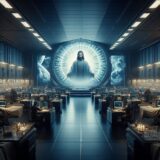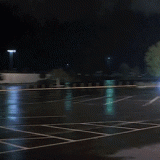
Last week, following a holiday in Cornwall, I looked at the relationship between some of Daphne du Maurier’s dark fiction, in particular the stories ‘The Birds’ and ‘Don’t Look Now’, and that beautiful county. As part of that holiday I treat myself to a first edition of the author’s 1976 collection Echoes From The Macabre: Selected Stories (Gollancz). Which as the title suggests, is a reprint collection focusing on some of du Maurier’s more horrific tales. The stories date from the period 1952-71. They are: ‘Don’t Look Now’, ‘The Birds’, ‘The Apple Tree’, ‘The Old Man’, ‘The Pool’, ‘The Blue Lenses’, ‘The Chamois’, ‘Not After Midnight’, and ‘Kiss Me Again, Stranger’.
Four of these originally appeared in the UK in a collection called The Apple Tree (Gollancz, 1952), retitled in America as Kiss Me Again, Stranger (Doubleday, 1953). Since 1963 the collection has been reprinted numerous times on both sides of the Atlantic as The Birds and Other Stories. Those four stories selected for Echoes From The Macabre are: ‘The Apple Tree’, ‘The Birds’, ‘The Old Man’ and ‘Kiss Me Again, Stranger’.
‘The Blue Lenses’, ‘The Pool’ and ‘The Chamois’ all originally appeared in The Breaking Point (Gollancz / Doubleday, 1959). ‘Not After Midnight’ and ‘Don’t Look Now’, both novellas about the English on holiday in southern Europe encountering something numinous and possibly supernatural, originally appeared in the 1971 collection Not After Midnight (Gollancz) -published in America as Don’t Look Now (Doubleday).

The volume opens with ‘Don’t Look Now’, which at 52 pages counts as a novella. I mentioned last week that when I originally read this story,having seen Nic Roeg’s great film first, I was disappointed. Well I’m afraid to say that ‘Don’t Look Now’ still feels flat compared to the film, and is less subtle, over explaining where the screen version (and it is usually the other way around) trusts the audience to make the connections themselves and draw their own conclusions.
Nevertheless, the novella feels almost like a film treatment, waiting to be brought alive by actors, sets, lighting, music. It is perhaps unfortunate that it is one of Daphne du Maurier’s most famous stories, as it is far from her best. Readers coming to this first might, as was I, be put off reading more of her work. And that would be a shame.

‘The Birds’, which bookends the collection, is much more effective, a tremendously suspenseful piece of writing, which in its lack of explanation for the apocalypse which engulfs the world, to say nothing of its seminal farm cottage siege, is surely a long unacknowledged missing link in the history of the rise and rise of the zombie in popular culture. Whatever the living dead do now, Du Maurier’s birds did first. Though the influence of fellow Cornish writer Frank Baker’s 1936 novel The Birds is a whole other story for another day.
‘The Birds’ itself runs to 37 pages, and most of the other stories are at least as long. ‘The Apple Tree’ was originally billed as a short novel, though it is a couple of pages shorter than ‘Don’t Look Now’. It reads as a sort of sardonic comedy about a man who soon comes to realise, once the initial shock is over, that he prefers his new life of freedom, now that his wife is dead. That is, until he increasingly comes to associate his departed wife with an old apple tree in the garden. And there is another, younger, apple tree, which perhaps reminds him of a young woman with whom he shared the slightest indiscretion during WWII.

This is a leisurely, almost whimsical tale, though it becomes darker towards the end. There is, of course, a long tradition of men and women having problems with apple trees, and du Maurier squeezes the pips to the bitter end.
‘The Pool’ is the disturbing story of a young girl’s awakening to wider possibilities, and of perceptions which could lead her astray to destruction. There is a pre-figuring of the opening of the film version of ‘Don’t Look Now’, and something of the sultry, perhaps mystical atmosphere of Picnic At Hanging Rock, as a long, hot, lazy English summer seems to echo the spirit of Arthur Machen.
‘The Blue Lenses’ is a tense, ambiguous psychological thriller. A woman goes into hospital for an operation which will restore her sight. But when the bandages come off she doesn’t like what she sees. Is she going mad, the victim of a conspiracy, or what? And will a second operation make things better or worse? ‘The Blue Lenses’ is surreal nerve-wracker, exactly the sort of story on which The Twilight Zone thrived. One can image it might easily have become a classic episode.
‘Kiss Me Again, Stranger’is another fine dark thriller, the story of a romantically inexperienced young man who falls in love with an usherette at his local cinema. A first date ends in a cemetery far across London, and meanwhile a serial killer is disembowelling members of the RAF.

‘The Chamois’ is set in Greece and involves a hint of mythology and a touch of not particularly subtle allegory. A hunter, something of a textbook sociopath, is determined to track and shoot a rare chamois rumoured to be in remote Greek mountains. His wife goes along, and her interpretation of events is more complex than her husband might have imagined.
‘Not After Midnight’ is another novella length tale. This time the protagonist is an Englishman aboard on Crete, a private school teacher on a painting holiday who is so disturbed by his experiences that he does something on his return which causes his dismissal from his teaching post. As in The Chamois, there are hints of mythology living on into the present. As in Kiss Me Again, Stranger, the protagonist is an inexperienced Englishman who finds himself in ultimately dangerous sexual waters. Quite what happens, and why, is left to a web of allusion and suggestion, and is the more chilling for being so enigmatic. ‘Not After Midnight’ may slightly remind some of John Fowles great novel The Magus, and equally can be seen as a literary ancestor to Nina Allen’s current BSFA Award-winning novella, Spin.

‘The Old Man’ is the shortest story in the collection, and depends on an ambiguous narrative line, which du Maurier pays out then reels in with great finesse. The titular character lives by a lake. The narrator spies on him, and suspects the worst. The story is another artful chiller.
While these stories are available in multiple different collections, wherever you find them they are all well worth your time. Ironically the most famous may be the weakest, though without it we would not have one of the greatest horror films ever made. But seek these dark tales out. If you like your nightmares beautifully crafted and subtly insidious you won’t regret it.
*
Next week I will be looking at the prospects for the planned new film versions of The Birds and Rebecca. Meanwhile you may enjoy this photo essay about my recent holiday Exploring Daphne du Maurier’s Cornwall.










